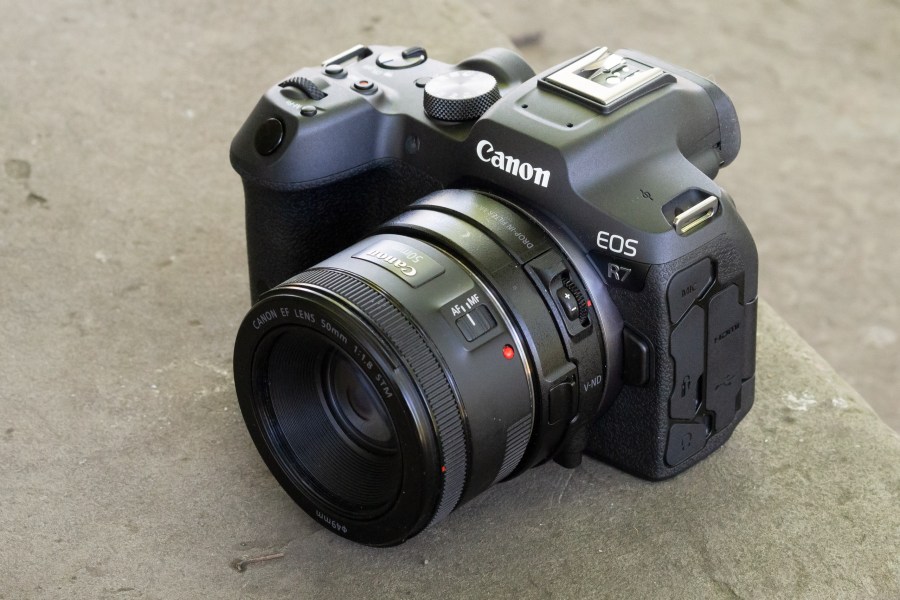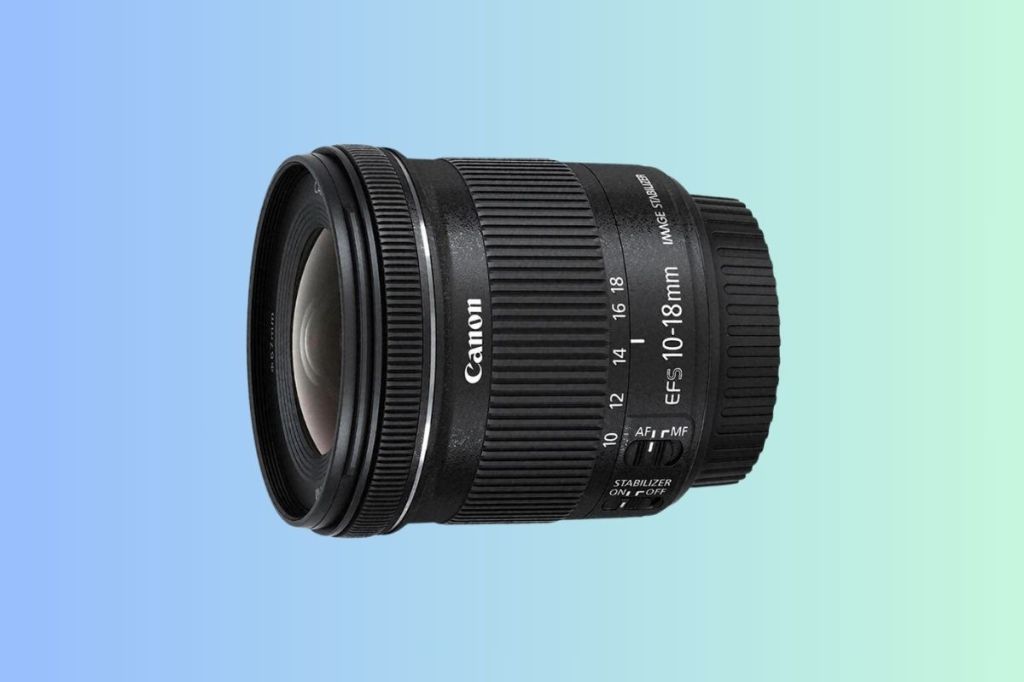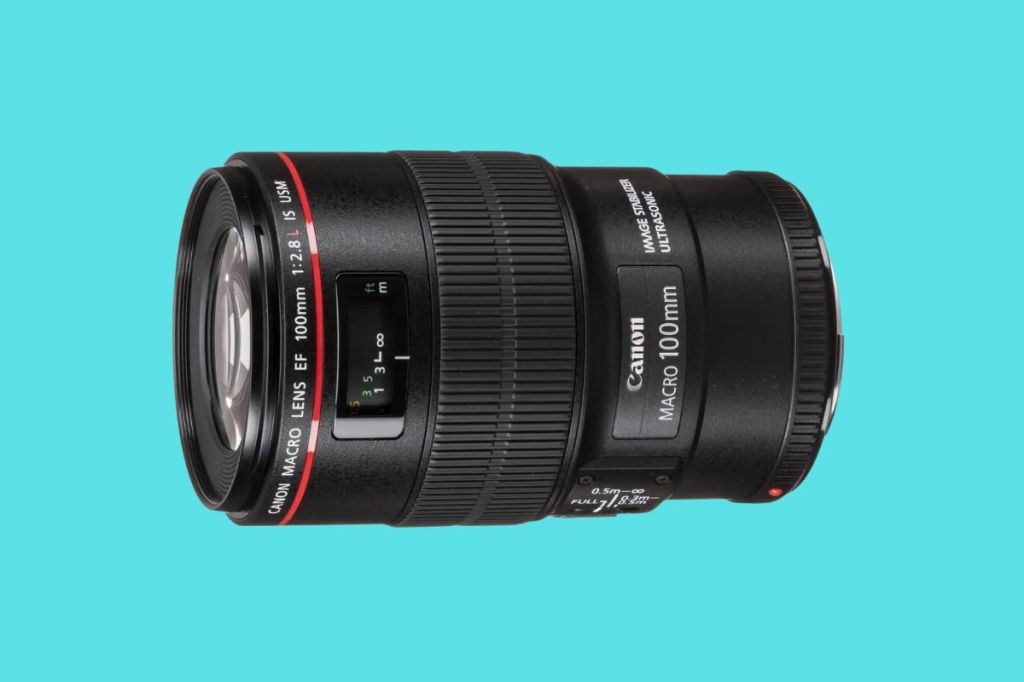The are so many great Canon EF lenses that they cater to all kinds of photography and photographer: wide-angle zooms, high-quality super-telephotos, pin-sharp macro lenses, budget-friendly travel-zooms – you name it, the Canon EF system probably has it. The EF-mount covers lenses that fit the best Canon EOS DSLRs, which even in this age of mirrorless remain among the most popular cameras around.
Canon EF-mount lenses can be adapted to work with the best Canon mirrorless cameras, too, and many are cheaper than Canon RF-mount lenses. So, whether for your Canon DSLR or Canon mirrorless camera, this guide will steer you to a great lens for it.
Our team reviews all major lenses released for all systems, and we’ve been covering Canon EF lenses for decades. Those on this list are the best ones we’ve tested; from professional-grade optics to budget-friendly options.
If you’re new to all this, fear not – there is an explainer section on how to choose a good Canon EF lens at the bottom of the page, with an FAQ section and answers to the most common questions we receive about DSLR lenses. For more budget-friendly choices, check out our guide to the best second-hand DSLR lenses.
Prices given in each product summary are from the date of publication and, as such, are subject to change.
The best Canon EF lenses: quick list
Looking for the best deal on Canon EF lenses? Not only will you find the best Canon EF lenses, but also some of the Canon EF lens deals, as our ‘Buy now’ buttons are set up to automatically take you to the best prices from trusted retailers. There is also a list of other retailers below each lens, so you can find the right deal for you.
- Best APS-C wide-angle: Canon EF-S 10-18mm f/4.5-5.6 IS STM – Buy now
- Best macro lens: Canon EF 100mm f/2.8L Macro IS USM – Buy now
- Best standard zoom: Canon EF-S 17-35mm f/2.8 IS USM – Buy now
- Best wildlife lens: Canon EF 100-400mm f/4.5-5.6L IS II USM – Buy now
- Best street lens: Canon EF 35mm f/1.4L II USM – Buy now
- Best cheap lens: Canon EF 50mm f/1.8 STM – Buy now
- Best portrait lens: Canon EF 85mm f/1.4L IS USM – Buy now
- Best zoom lens: Canon EF 70-300mm f/4-5.6 IS II USM – Buy now
- Best pancake lens: Canon EF-S 24mm f/2.8 STM – Buy now
- Best walk-around lens: Canon EF 24-105mm f/4L IS II USM – Buy now
- Best ultra wide-angle zoom: Canon EF 11-24mm f/4L USM – Buy now
- Best ultra-wide-angle zoom with IS: Canon EF 16-35mm f/4L IS USM – Buy now
And our picks of the best third-party Canon EF lenses:
- Best for sports: Sigma 70-200mm F2.8 DG OS HSM Sports – Buy now
- Best superzoom: Tamron 100-400mm f/4.5-6.3 Di VC USD – Buy now
- Best standard zoom: Sigma 24-70mm F2.8 DG OS HSM Art – Buy now
- Best for street: Sigma 40mm F1.4 DG HSM Art – Buy now
Why you can trust Amateur Photographer
We spend many hours testing every product we recommend, in detail, in a variety of situations and shooting scenarios, and only use experts for our reviews, so you can be sure that you’re getting the best products. Find out more about our expert writers.
Read on for full details of these lenses, including how they performed in our tests:
Best wide-angle APS-C lens
Canon EF-S 10-18mm f/4.5-5.6 IS STM
Amateur Photographer verdict
While the maximum aperture may be a little restrictive, this wide zoom is your best bet for shooting landscapes and architecture on APS-C Canon DSLRs.- Near-silent focusing
- Four-stop stabilisation
- Small size
- Plasticky build
- Electronic manual focus
At a glance:
- APS-C lens (equivalent focal range: 16-28.8mm)
- Construction: 14 elements, 11 groups
- Weight: 240g
- Price new: $299 / £249
- Price used: $199 / £132
Slim and lightweight, offering a wide-angle perspective, the Canon EF-S 10-18mm f/4.5-5.6 IS STM is ideal for any APS-C Canon DSLR. Well suited to the beginner-friendly Canon EOS 2000D / Rebel T7 and the enthusiast-focused Canon EOS 90D – this lens will balance well and deliver all the features you might need. Autofocus is nice and speedy, and also very quiet, which is useful for video work. There’s also a four-stop image stabilisation system on board.
Its affordable price tag makes this lens a bargain for any crop-sensor Canon DSLR user – but there are compromises. For instance, the lens body is constructed from plastic rather than metal, making it more fragile than premium lenses. Also, while the maximum aperture of the lens is f/4.5, it can only shoot at f/4.5 when locked at its widest setting of 10mm (16mm equivalent); the maximum aperture drops very sharply to f/5 once you start zooming.
Such an affordable, portable lens as the Canon EF-S 10-18mm f/4.5-5.6 IS STM makes for an excellent choice for architecture photography.
Best Canon lens for macro
Canon EF 100mm f/2.8L Macro IS USM
Amateur Photographer verdict
An absolute stunner of a lens, beautifully made and capable of delivering pin-sharp image detail. The only stumbling block is the cost.- Superb detail resolution
- Fast autofocus, smooth manual focus
- High-quality build
- Price jump from previous iteration
At a glance:
- Full-frame lens
- Construction: 15 elements, 12 groups
- Weight: 625g
- Price new: $1,299 / £1,249
- Price used around: $950 / £600
Into macro photography? Shooting frame-filling close-ups of tiny subjects is one of the most technically demanding photographic disciplines out there – and one of the most rewarding. Having the right lens is crucial for macro photography; and the Canon EF 100mm f2.8L Macro IS USM is most certainly that.
For starters, it’s one of Canon’s ‘L’ lenses. The company reserves this designation for its top-of-the-line lenses, built to exacting quality standards throughout. Next, it’s a ‘true’ macro lens – that’s to say, it has a reproduction ratio of 1:1, i.e. the size of the subject as rendered on your sensor plane is the same as its actual real-life size.
You can show the tiniest things in glorious, close-up detail. You’ll be up close and personal to these subjects; so the EF 100mm f2.8L Macro IS USM’s 30cm minimum focusing distance and telephoto focal length come in handy.
Like many macro lenses, the EF 100mm f2.8L Macro IS USM doubles up well as a portrait lens, helped by its maximum aperture of f/2.8. Its additional image stabilisation opens up such possibilities (of less use to macro photography where tripods are near-standard). For a dedicated portrait lens, see our guide to the best lenses for portrait photography.
Best second-hand Canon lens
Canon EF 17-35mm f/2.8L USM
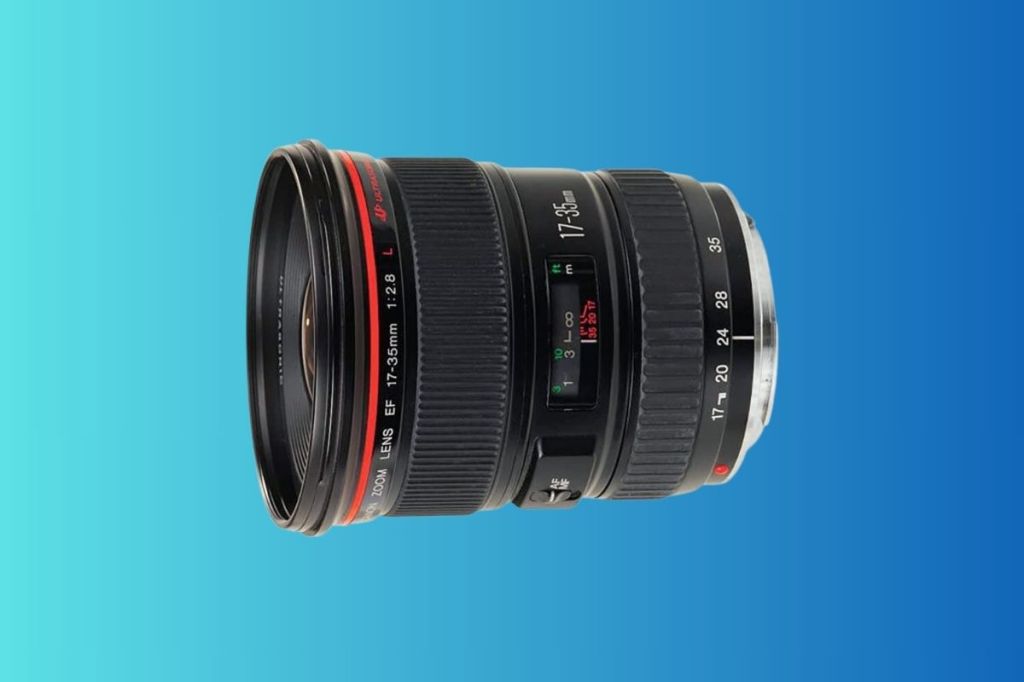
Amateur Photographer verdict
This full-frame zoom is a steal on the second-hand market, and if properly cared for it’ll last you for years of happy shooting. A great choice for travel and street.- Lightweight and well-balanced
- Can take serious punishment
- Solid image quality, even at f/2.8
- Excellent value
- Not as sharp as newer lenses
At a glance:
- Full-frame lens
- Construction: 15 elements, 10 groups
- Weight: 545g
- Price used: from $350 / £520 (variable availability)
An older L-series lens, the Canon EF 17-35mm f/2.8L USM is discontinued, but still turns second-hand at greatly reduced prices. Many similar EF lenses have arrived since, such as the Canon EF 16-35mm f/2.8L III USM and the cheaper Canon EF 16-35mm f/4L IS USM. However, the good old EF 17-35mm f/2.8L USM still holds a place in plenty of photographers’ hearts.
A hardy, rugged jack-of-all-trades, the Canon EF 17-35mm f/2.8L USM is built to last; so examples do still turn up for sale. The relatively wide focal range makes it useful for documentary and street photography. Indeed, until sharper successors came along it was a favourite among the press pack.
Possibly not quite sharp enough to meet the demands of digital newsrooms and press agencies nowadays, yet it’ll deliver solid images and withstand any conditions you care to throw at it – great for for the enthusiast photographer. The constant f/2.8 aperture also makes it useful in broad-ranging light conditions.
Weighing 545g, it balances nicely on Canon DSLRs without making any of them too front-heavy. At current second-hand prices, the Canon EF 17-35mm f/2.8L USM is a terrific lens. It’ll work brilliantly well for travel and street photography.
Read our Canon EF 17-35mm f/2.8L USM field test by professional photojournalist Andy Blackmore.
Best Canon lens for wildlife
Canon EF 100-400mm f/4.5-5.6L IS II USM
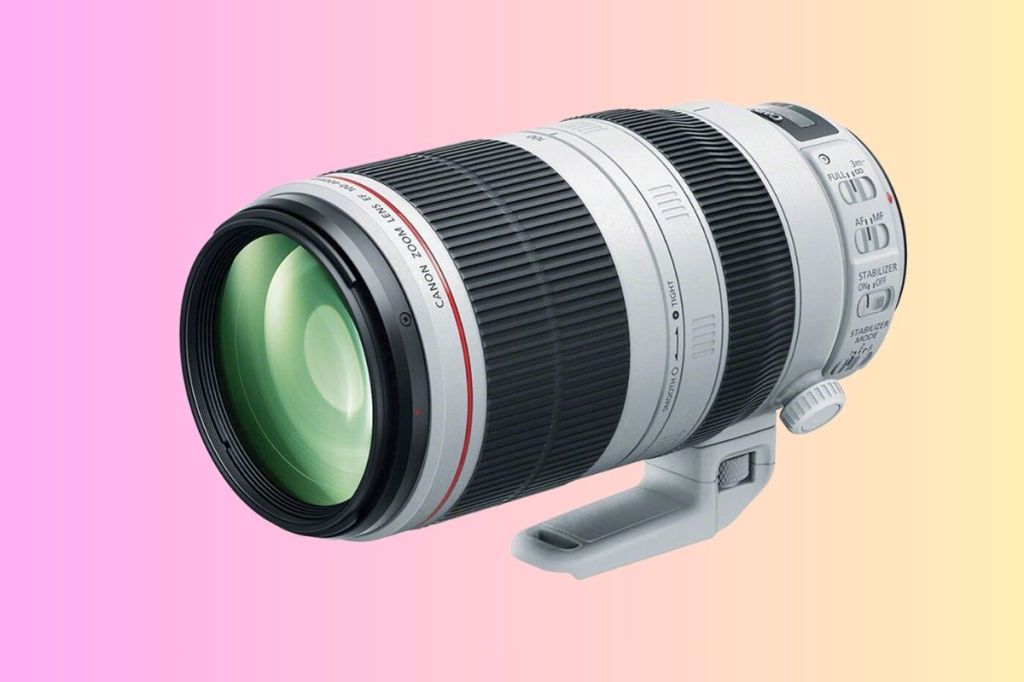
Amateur Photographer verdict
One of the absolute dons for wildlife on Canon DSLRs, this super-slick telezoom delivers professional-level results, again and again. Of course, such quality is not cheap.- Superb autofocus
- Effective stabiliser
- Exceptional image quality
- Intimidating price
- Some vignetting at wide apertures
At a glance:
- Full-frame lens
- Construction: 21 elements, 16 groups
- Weight: 1640g
- Price new: $2,399 / £2,599
A common question we hear is, which Canon lens is best for wildlife? The absolute best would be a telephoto prime in the ‘L’ series, such as the Canon EF 800mm f5.6 L IS USM. However, that lens retails at £13,549 and is for high-end professionals. For most people, the Canon EF 100-400mm f/4.5-5.6L IS II USM will deliver exceptional results for wildlife photography.
We tested this lens by taking it for a challenging day photographing birds of prey in flight. Bird-in-flight images (often shortened to ‘BIF’) are of great interest to wildlife photographers, and the Canon EF 100-400mm f/4.5-5.6L IS II USM does a commendable job of nailing the shot, time and again.
Its image quality is top-notch too – when we took our bird images back to the computer for inspection, we were hugely impressed with the sharpness on display. The image stabiliser functionality was also really helpful for getting those tricky wildlife shots. The ‘L’ tag on the body means that the construction is rock-solid, too.
The only drawback with this lens is its price, which may be too much for some users. If you want something cheaper for wildlife photography, try the Sigma 70-200mm F2.8 DG OS HSM Sports or the Tamron 100-400mm f/4.5-6.3 Di VC USD, both of which are featured further down this list.
Read our Canon EF 100-400mm f/4.5-5.6L IS II USM field test
Best Canon EF street lens
Canon EF 35mm f/1.4L II USM
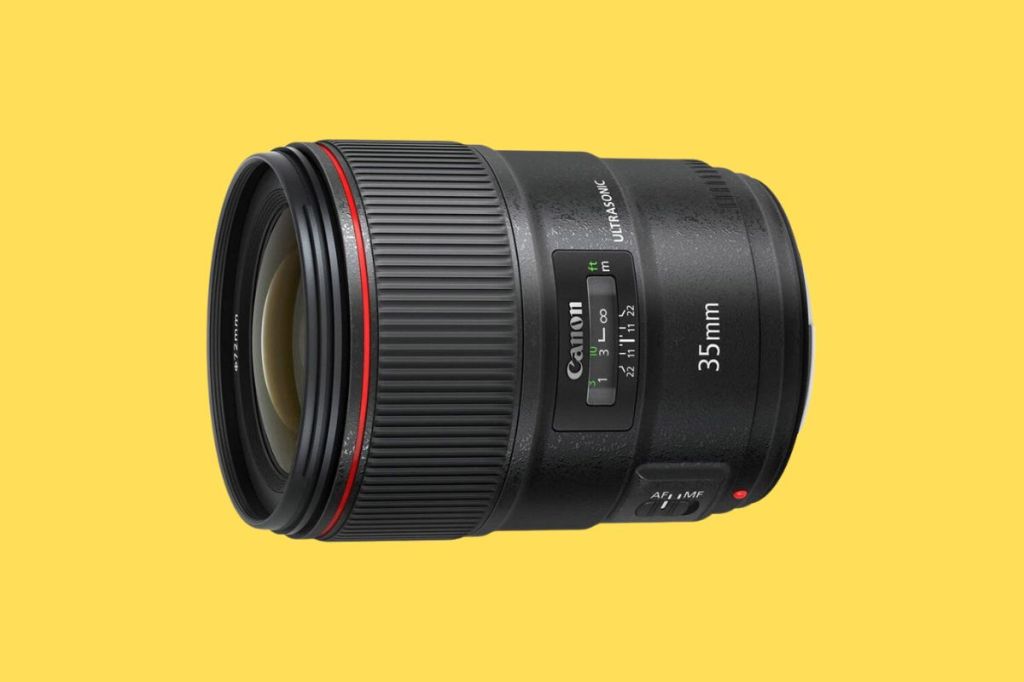
Amateur Photographer verdict
It may be heavy, and the price has actually gone up since release. But this razor-sharp prime lens is a gorgeous optic for street and documentary shooting, justifying its price tag.- Superb image quality
- Smooth bokeh from 9-blade aperture
- Usefully versatile focal length
- High asking price
- Heavy for a 35mm
At a glance:
- Full-frame lens
- Construction: 14 elements, 11 groups
- Weight: 760g
- Price new: $1,999 / £2,199
- Price used: from $865 / £1,100
Canon went back to the drawing board to update its popular wide-aperture wide-angle prime: the Canon EF 35mm f/1.4L. Competition had been increasing thanks to Sigma’s introduction of its Sigma 35mm f/1.4 Art lens, a much cheaper alternative that still delivered the goods optically. Canon needed to pull something out of the bag to keep up.
The one thing it did not do, perhaps inevitably, was cut the price. While Sigma Art f/1.4 lenses tended to be around the £700-800 mark, the Canon EF 35mm f/1.4L II USM arrived on the scene an eye-watering £1,799. It currently retails new for $2,000 / £2,199. Inflation is not just for balloons, it seems.
But the thing is, the Canon EF 35mm f/1.4L II USM is a beautiful, razor-sharp lens that really does justify its price tag. Earning all five stars in our full review, the lens is super sharp at the edges and centre of images, and is highly effective at controlling chromatic aberration thanks to its new BR (Blue Spectrum Refractive) optic. It’s heavy – but not too heavy to handle.
For wedding photographers, events photographers and other professionals, we’d say this lens is well worth the investment.
Read our full Canon EF 35mm f1.4L II USM review.
Best cheap Canon lens
Canon EF 50mm f/1.8 STM

Amateur Photographer verdict
Whether you’re using full-frame. or APS-C, this cheap little prime deserves a spot in the kit bag. It’s fun to use, and an ideal step up from a kit lens.- Super-light
- Very cheap
- Good for full-frame and APS-C
- Inevitable sharpness compromise at this price
- Autofocus not silent
At a glance:
- Full-frame lens
- Construction: 6 elements, 5 groups
- Weight: 162g
- Price new: $125 / £129
This small ‘nifty fifty’ improves upon Canon’s older designs and has been brought up-to-date by incorporating a Stepper Motor (STM) for smoother and quieter AF. Compatible with full-frame and APS-C DSLRs, it becomes a highly practical and creative short telephoto lens that’s equivalent to 80mm when attached to the latter.
If you enjoy shooting portraits – or any subject where you’d like to create attractive background blur – this lens allows you to do it without breaking the bank. It has a smaller 49mm filter thread and improved build quality over Canon’s older EF 50mm f/1.8 II, but produces results of similar quality. Stopping down from f/1.8 to f/2.8 improves sharpness and all trace of corner shading disappears by f/4. It’s one of the most popular lenses for those who feel they’ve outgrown a kit zoom.
Read our full Canon EF 50mm f1.8 STM review.
Best Canon lens for portraits
Canon EF 85mm f/1.4L IS USM
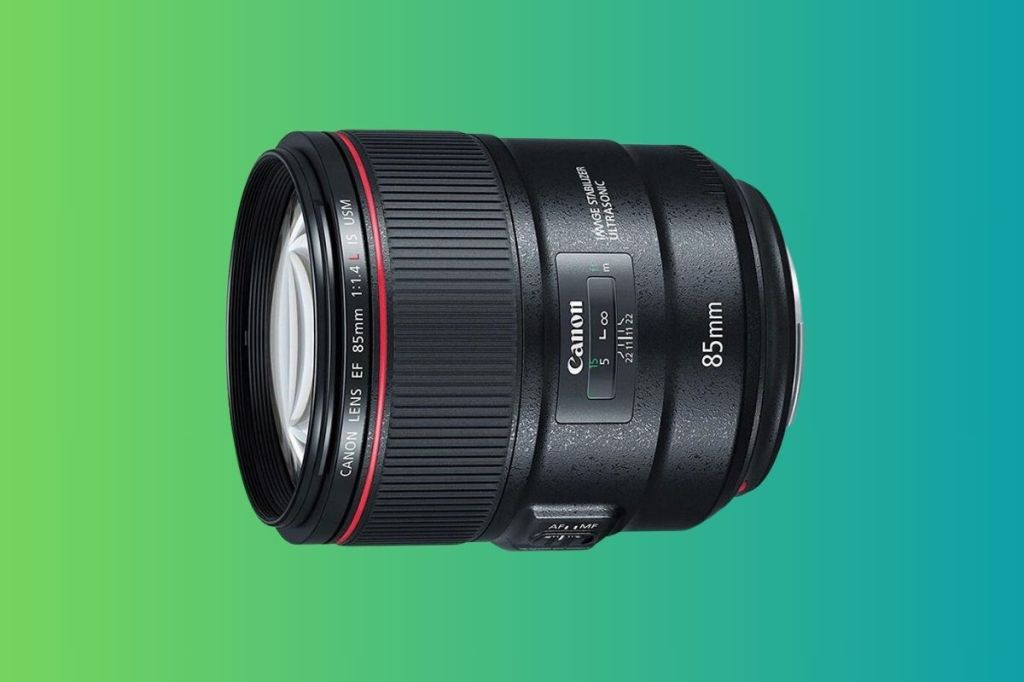
Amateur Photographer verdict
A pitch-perfect portrait prime that’s in many ways better than the pricier f/1.2 version, this short telephoto is lightweight, weather-sealed and stabilised. Three big ticks for us.- Superb image quality
- Four-stop stabilisation
- Weather sealing
- Expensive
- Heavy
At a glance:
- Full-frame lens
- Construction: 14 elements, 10 groups
- Weight: 950g
- Price new: $1,599 / £1,699
- Price used: from $1,200 / £1,150
This new L-series telephoto prime will have great appeal to portrait and wedding photographers who desire superior image quality to the ageing EF 85mm f/1.8 USM. It will also be of interest if you don’t want to splash out £1,765 for the larger and heavier EF 85mm f/1.2L II USM.
The big attraction is its optical image stabilisation, which is effective to four stops and will be a godsend for wedding photographers in low-light venues such as churches and dimly lit reception interiors. It has a 77mm filter thread, 0.85m minimum focusing distance and weather sealing that’ll provide reassurance when used in variable weather conditions.
Hands-on Canon EF 85mm f1.4L IS USM review
Best Canon lens for zoom
Canon EF 70-300mm f/4-5.6 IS II USM

Amateur Photographer verdict
Some rather cheeky price-gouging notwithstanding, this compact telephoto is a winner. It’s a good pairing with mid-range DSLRs, both APS-C and full-frame.- Fast, silent AF
- Useful LCD readout panel
- Balances well with mid-range DSLRs
- No weather seal around mount
- £75 for a hood is inexcusable
At a glance:
- Full-frame lens
- Construction: 17 elements, 12 groups
- Weight: 710g
- Price new: $599 /£639
- Price used: from $390 / £395
This mid-range telephoto zoom incorporates four-stop image stabilisation and a new, Nano USM motor for fast and silent autofocus. It weighs 720g, has a nine-bladed diaphragm and is equivalent to 112-480mm on an APS-C DSLR.
An interesting idea is the lens’s LCD panel, which can be used to cycle through three modes: focal length, a camera shake meter, and the current focus distance complete with depth-of-field scale. It’s a great match to mid-range DSLRs, offering a great balance between portability and image quality.
Read our full Canon EF 70-300mm f4-5.6 IS II USM review
Best Canon pancake lens
Canon EF-S 24mm f/2.8 STM
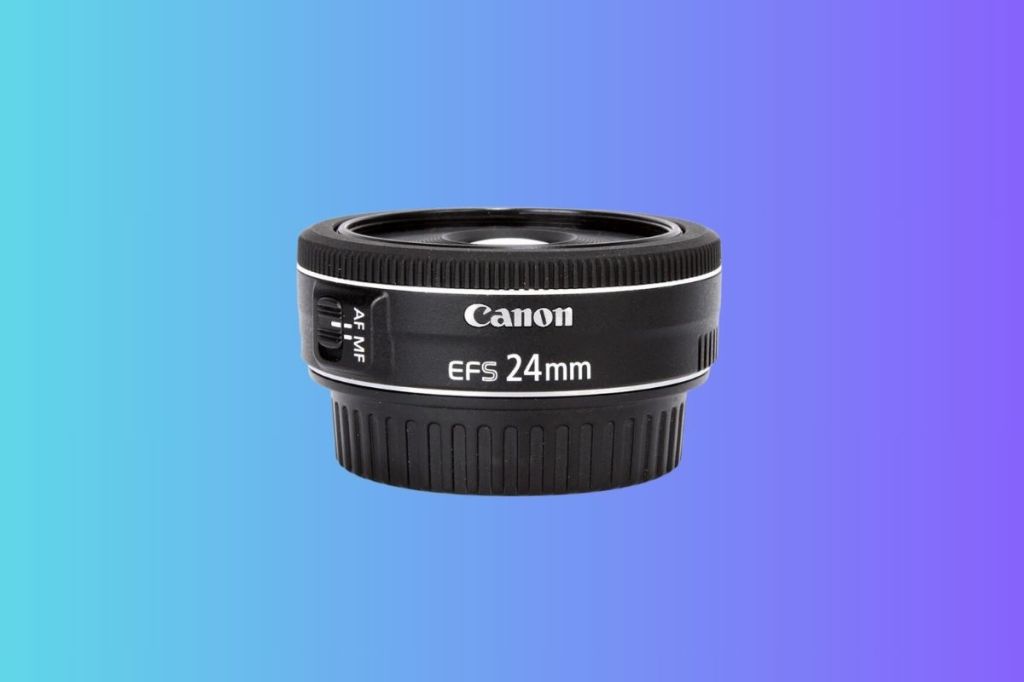
Amateur Photographer verdict
If you’re using APS-C DSLRs, this lens should be a no-brainer. It’s compact, it’s versatile, it’s got a decently fast aperture. Shop used for the chance to save even more.- Ultra-slim
- Useful 38mm equiv. focal length
- Good sharpness
- Some vignetting
- Some distortion (both easily corrected)
At a glance:
- APS-C lens (equivalent focal length: 38mm)
- Construction: 6 elements, 5 groups
- Weight: 125g
- Price new: $149 / £159
This ultra-slim pancake prime is one of the least expensive lenses on the market. Measuring just 22.8mm thick, it can easily be carried around all day without inconvenience. It’s a marvellous little optic for travel and street photography, providing a 38mm equivalent angle of view on the Canon APS-C DSLRs, for which it is made.
The lens does exhibit vignetting at wide apertures, as well as distortion – but both are easily remedied in software. Most importantly, the lens focuses accurately and gives consistently sharp, detailed images. With its bargain price, carry-everywhere size and highly competent imaging performance, this lens deserves to be high on the wish list of many a Canon APS-C DSLR user.
Read our full Canon EF-S 24mm f2.8 STM review.
Best Canon walk-around lens: Canon EF 24-105mm f/4L IS II USM
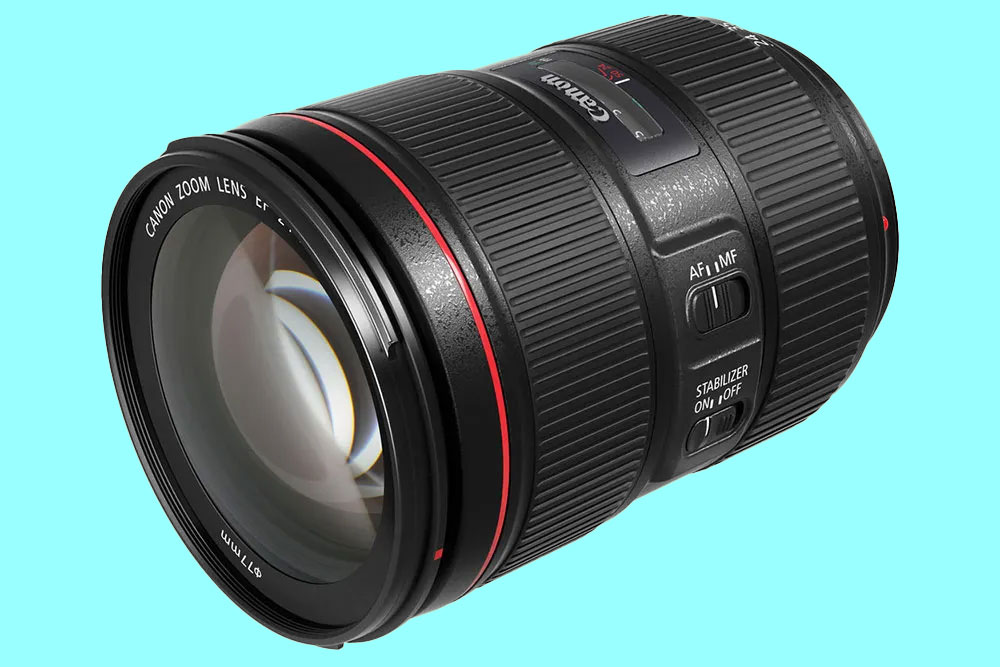
Amateur Photographer verdict
A good 24-105mm can be your best friend if you just want a single lens to do a bit of everything – and Canon’s long-awaited updated version is a doozy for both stills and video.- Do-everything zoom range
- Excellent sharpness
- Well-optimised for video
- Quality lags behind the flagship lenses
- Quite pricey for an f/4
At a glance:
- Full-frame lens
- Construction: 17 elements, 12 groups
- Weight: 795g
- Price new: $1,299 / £1,389
- Price used: from $850 / £650
This lens is the replacement for one of Canon’s best-selling full-frame optics for more than 10 years – the EF 24-105mm f/4L USM. It features a revised optical design that has made it a little sharper towards the edges with less barrel distortion at the wide end.
Vignetting isn’t quite as severe either, and it features a new electronic aperture diaphragm system (EDM) that provides smoother and quieter aperture changes during movie capture. It’s the best 24-105mm full-frame zoom Canon makes, but isn’t quite as razor sharp as the stunning EF 24-70mm f/2.8L II USM.
Read our full Canon EF 24-105mm f4L IS II USM review
Best ultra wide-angle zoom
Canon EF 11-24mm f/4L USM
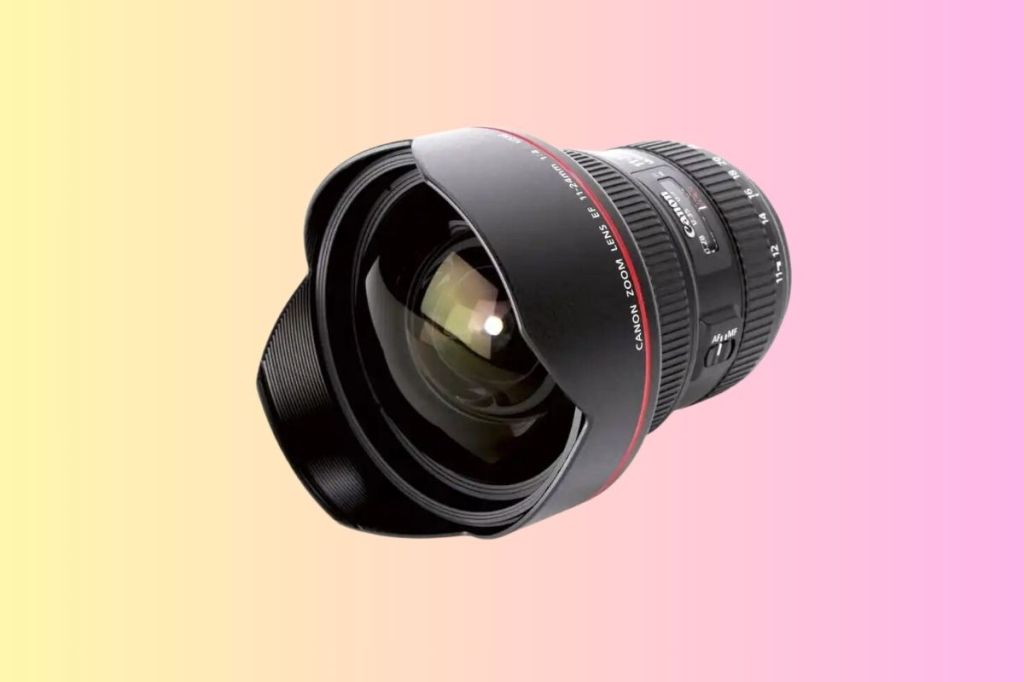
Amateur Photographer verdict
One of the finest landscape lenses ever made, this rectilinear wide-angle zoom is a treat to use. Search second-hand for better prices.- Outstanding image quality
- Premium construction
- Full-time manual focus override
- Prohibitive price
At a glance:
- Full-frame lens
- Construction: 16 elements, 11 groups
- Weight: 1179g
- Price new: $2,999 / £2,999
- Price used: from $1,799 / £1,195 used
Canon and its engineers deserve praise for constructing one of their finest L-series lenses. The Canon EF 11-24mm f/4L USM lens is one of, if not the best, rectilinear wide-angle zooms ever made.
Full-frame users who specialise in landscape, architecture, or interior photography will want this. A lens that can squeeze more surroundings into the frame, and do so at exceptional optical performance like this, is one for the wish list.
You may find it second-hand. A used model in good condition will cost around $1,800/ £1,200.
Read our Canon EF 11-24mm f/4L USM review
Best ultra-wide-angle zoom with IS: Canon EF 16-35mm f/4L IS USM

Amateur Photographer verdict
Great for landscapes, this stabilised zoom lens impressed us both in terms of its image quality and its durable, weather-sealed construction.- Solid image quality
- Weather sealing
- Built-in stabilisation
- Not cheap
- Only f/4
At a glance:
- Full-frame lens
- Construction: 16 elements, 12 groups
- Weight: 615g
- Price new: $1,299 /£1,389
- Price used: $750 / £850
This ultra-wide-angle zoom lens is ideal for landscape, architecture, and interior shots where you need to get as much as possible into the frame. The built-in image stabilisation (IS) will help when slower shutter speeds are needed, such as shooting in low-light conditions.
With an f/4 aperture, this lens is best suited to landscapes and detailed images, and the best results obtained when shooting at f8. We were impressed by the image quality produced by the lens in our review. As a Canon L series lens, it is fully weather-sealed so should endure adverse conditions.
Read our Canon EF 16-35mm f/4 L IS USM review
Best third-party EF-mount lenses
For high-quality lenses at lower prices, and slightly more unusual / specialist lenses, then have a look at some of these options.
Best for sports: Sigma 70-200mm F2.8 DG OS HSM Sports
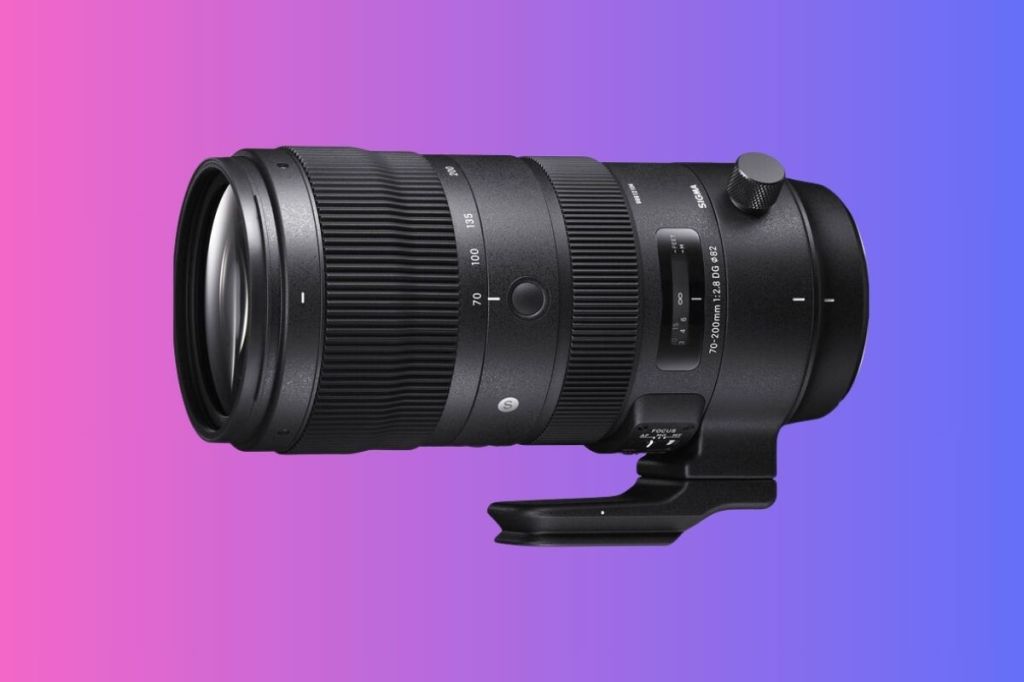
Amateur Photographer verdict
You can save some real cash by opting for this fast telezoom over a Canon-made lens – and still get a fantastic lens into the bargain.- Excellent sharpness
- Powerful 4-stop stabilisation
- Undercuts Canon’s own lens on price
- Very heavy
At a glance:
- Full-frame lens
- Construction: 24 elements, 22 groups
- Weight: 1805g
- Price new: $1,499 / £1,199
- Price used: from around $1,200 / £1,000
Sigma produce some impressive and interesting lenses, as well as offering similar alternatives to Canon’s own brand offerings. This 70-200mm f2.8 lens contains optical image stabilisation, with 4-stops of stabilisation. It delivers impressively sharp results, with low levels of distortion.
As well as weather-sealed, it also benefits from being noticeably cheaper than Canon’s 70-200mm f2.8 lens, saving some serious money!
Find out more in our Sigma 70-200mm F2.8 DG OS HSM Sports review.
Best superzoom: Tamron 100-400mm f/4.5-6.3 Di VC USD

Amateur Photographer verdict
While it may not feel as premium as rival metal-bodied lenses, this Tamron telephoto zoom is a great-value buy for wildlife photography.- Excellent value
- Reliable autofocus
- Very good centre sharpness
- Some softness in corners
- Plasticky build
At a glance:
- Full-frame lens
- Construction: 17 elements, 11 groups
- Weight: 1,135g
- Price used: from $790 / £770
Tamron has been on something of a discontinuation spree with its DSLR lenses, but there are still some excellent ones from this manufacturer for Canon EF mount. Case in point: the Tamron 100-400mm f/4.5-6.3 Di VC USD.
A relatively cheap lens that punches above its weight, this optic arrived a few months after Sigma’s own Contemporary version, at a price designed to undercut it. If you want a Canon own-brand 100-400mm lens, your only options are the hugely expensive ones like the L lens listed earlier in our guide. So this Tamron optic fills a good niche.
It’s a great performer for the price, too. Sharpness is great at all focal lengths, especially in the centre of the frame, and the USD (Ultra-sonic Silent Drive) autofocus system delivers the goods. The Canon L lens is built to last a lifetime, and is generally better in all categories, but it’s also almost four times the price. Tamron’s 100-400mm f/4.5-6.3 Di VC USD lens offers tremendous value for money.
Best standard zoom: Sigma 24-70mm F2.8 DG OS HSM Art
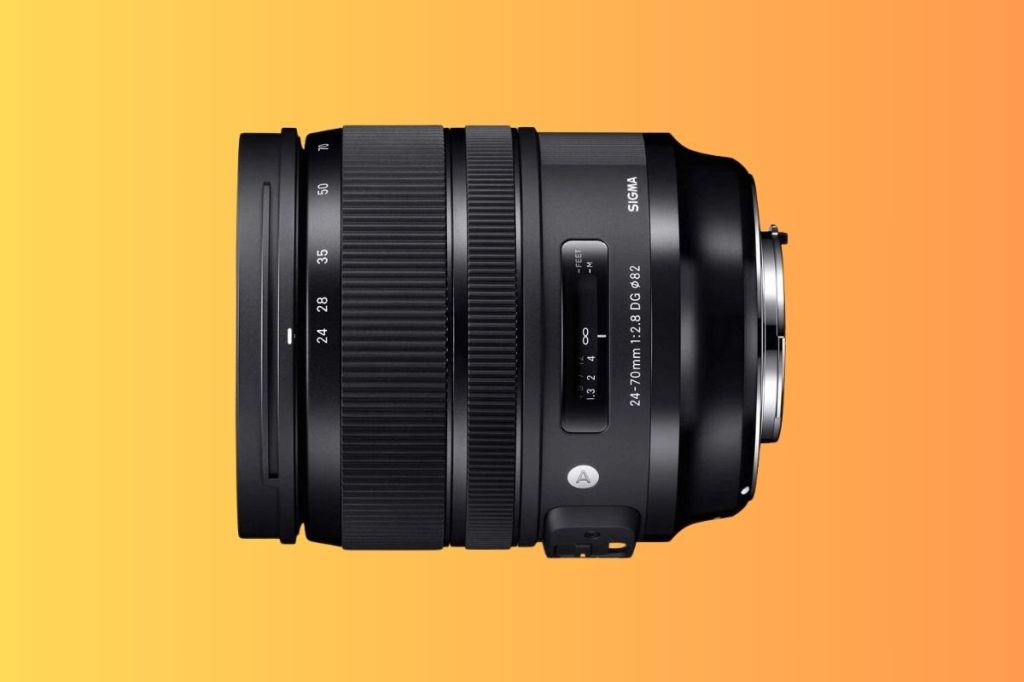
Amateur Photographer verdict
While it isn’t weather-sealed, this compact lens is built light and is tailor-made for travel. We also like the inclusion of optical stabilisation.- Optical stabilisation
- Relatively portable
- Constant f/2.8 aperture
- No weather sealing
At a glance:
- Full-frame lens
- Construction: 19 elements, 14 groups
- Weight: 1020g
- Price: from $1,299 / £1,149
- Price used: around $900 / around £1,000
Another alternative to Canon’s own brand lens, the 24-70mm f2.8 DG OS HSM Art lens offers the a bright f2.8 aperture throughout the zoom range. It has the benefit of optical image stabilisation, which is missing from Canon’s more expensive 24-70mm f2.8L II USM lens, at £2109. It’s also a compact lens, so a good choice for those looking for something smaller.
Read our Sigma 24-70mm F2.8 DG OS HSM Art review.
Best for street: Sigma 40mm F1.4 DG HSM Art

Amateur Photographer verdict
An interesting lens in a less common focal length, the Sigma 40mm F1.4 DG HSM Art is great for street photography – though you do have to contend with its considerable weight.- Novel 40mm perspective
- Effectively minimised distortion
- Big and heavy
At a glance:
- Full frame lens
- Construction: 16 elements, 12 groups
- Weight: 1200g
- Price used: from $1,000 / £650
The Sigma 40mm F1.4 DG HSM Art lens is designed for optimum image quality, with minimal distortion. Slightly wider than the typical 50mm lens, the Sigma 40mm F1.4 is a great choice for a bright prime lens for those looking for something different. It offers exceptional image quality and beautiful background blur (bokeh). However, it is large and weighty at 1.2kg.
Read our full Sigma 40mm F1.4 DG HSM Art review.
How to choose a Canon EF / EF-S lens
Here are the key criteria to consider when selecting the right lens for your Canon DSLR.
Focal length / range – This is the first decision to take when buying a lens, and it will likely be dictated by what subjects you want to shoot. Those capturing architecture and landscape photography will likely opt for a wide-angle, in order to get as much of their expansive subjects in the frame as possible. For action, wildlife and animal photography, a telephoto is your best bet; being limited in how close you can get to your subject. For general-purpose or documentary photographers, a good standard zoom lens will fit the bill; see our guide to the best EF-mount zoom lenses for suggestions.
Maximum aperture – The maximum aperture width of a lens affects the light it can let in, and how shallow a depth of field – delineation between subject and background – it can provide. For shooting portraits you want a large-aperture lens (at least f/2, ideally f/1.4) for that portrait ‘look’ of a sharp subject and artfully blurred background.
Sharpness – Quite a simple prospect here – how sharply does a lens render an image? Does detail extend right to the edges and corners of images? How consistent is it throughout the aperture range, or zoom range if there is one? The one way to know all this is by testing them, and we have done. Click through to our reviews throughout the guide for sample images and resolution test results.
Optical Image Stabilisation – Newer Canon EF lenses will come equipped with image stabilisation (look for the acronym ‘IS‘ in the lens name, meaning ‘Image Stabilizer‘). This system compensates for unintentional camera movement, making it possible to use slower shutter speeds or greater zoom lengths with the camera hand-held.
Autofocus system – Canon employs a variety of speedy and accurate autofocus systems on its lenses, including the Stepping Motor (STM) and the more sophisticated Ultra Sonic Motor (USM). Better autofocus means you’ll stand a better chance of capturing sharp images of fast-moving subjects; but, of course, they come at a price. If you’re planning on shooting video, you may also want to check whether a lens has a silent AF system.
Macro capabilities – For shooting close-ups and macro photography, look for a lens with “Macro” in the name, as this will allow you to get closer to your subject. This means a lens that can reproduce a subject at life-size – or close to – on the sensor, meaning you can fill the frame with the tiniest of things.
Canon EF lenses: Frequently asked questions
FAQ: Which Canon EF lenses have image stabilisation?
Image stabilisation is a popular feature on modern digital cameras and lenses. It improves sharpness by compensating for unintentional camera movement from hand-held use (without a tripod). A good optical stabilisation system allows the capture of sharper images at slower shutter speeds. As a slower shutter speed allows more light to the sensor, photographers may produce a usable image in light that would otherwise be too low.
Some Canon EF lenses have built-in stabilisation, others do not. Check the name. The initials ‘IS’ denote image stabilisation. The Canon EF 16-35mm f/4L IS USM is, therefore, a stabilised lens.

Be aware that other lens manufacturers use different terms and acronyms for stabilisation. Third-party lenses will be different. Tamron, for instance, uses ‘Vibration Compensation’, which is shortened to ‘VC’. This is how you know the Tamron 100-400mm f/4.5-6.3 Di VC USD has built-in stabilisation. Know who you’re dealing with!
Canon DSLRs do not have 5-axis optical stabilisation as its mirrorless cameras do; so picking up a lens with the feature can provide a real shooting advantage.
FAQ: What’s the difference between Canon EF lenses and EF-S?
Canon EF lenses come in two varieties, EF and EF-S. Which ones you can use will depend on the size of the sensor inside your Canon DSLR – whether it’s full-frame or a smaller APS-C chip. Pro and advanced enthusiast DSLRs like the Canon EOS 5D Mark IV are generally full-frame. Smaller, cheaper DSLRs like the EOS 250D usually field an APS-C sensor. All cameras’ sensor sizes are readily available online, and easily searched.
The key points to remember are as follows:
Canon EF lenses can be used on both full-frame and APS-C cameras. The majority of Canon DSLR lenses fall into this category. They will fit any Canon DSLR, though when fitted to an APS-C camera, the smaller sensor size will incur what’s called a crop factor, extending the effective focal length of the lens. Canon has a crop factor of 1.6x: so a 50mm lens mounted on a Canon APS-C DSLR will produce an equivalent focal length of 80mm.

Canon EF-S lenses are designed for APS-C cameras only. A Canon EF-S lens cannot be mounted on a full-frame body. They tend to be lighter than EF lenses, and balance better with smaller APS-C cameras. Also, although designed for crop sensor cameras, the crop factor still applies. This means a lens like the EF-S 10-18 f/4.5-5.6 IS STM actually produces a focal range of 16-28.8mm.
For more on the differences between sensor sizes, check out our complete guide to APS-C vs full-frame.
FAQ: Is Canon still making EF lenses?
Yes – for the time being. New Canon EF lenses are still rolling off the production line, and DSLR photographers can kit themselves out with brand new lenses. To find out which Canon EF lenses have been discontinued, head to our 30 Canon DSLR lenses discontinued article.
However, what Canon is not doing is developing new EF lenses. The firm is quite clearly devoting all of its R&D budget to its line-up of mirrorless lenses (see our run-down of the best Canon RF-mount lenses), and so the range of EF lenses is only likely to shrink in years to come as models are discontinued and not replaced.
How we test lenses
We review lenses from the perspective of choosing one for its photography and video performance, so we test every lens for all aspects of image quality: sharpness, contrast, background blur and bokeh, as well as other image qualities pertinent to assessing a lens type. We look for optical flaws such as chromatic aberration and distortion. We test focus performance for both accuracy and speed (in different lighting conditions), as well as how the lens delivers or renders images. This is tested in a range of shooting scenarios designed to expose lens characteristics, but we also examine how it performs in real world use in diverse shooting situations.
Beyond the pure optical performance of the lens, we assess the lens’ physical qualities, such as its design, build quality, ease of handling, and whether it offers any unique or interesting features worth mention. Beyond image quality certain lenses can be assessed for how they make you feel, or how they may affect a camera system set-up for portability, compactness, weight etc.
Text by Amy Davies, with contributions from Jon Stapley and Michael Topham.
For more have a look at the latest news, lens reviews, and buying guides, or have a look at the best Canon EOS cameras.

